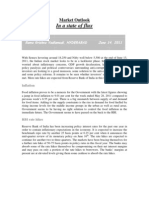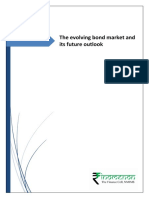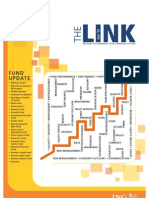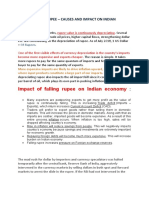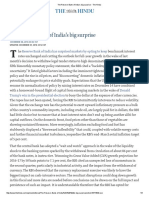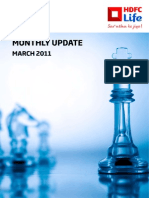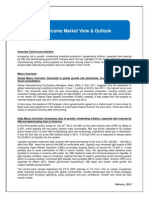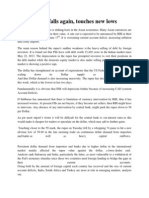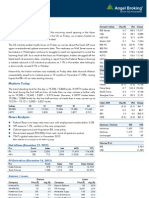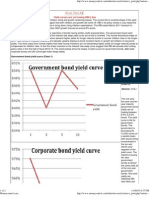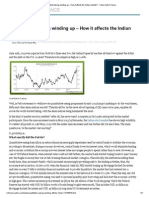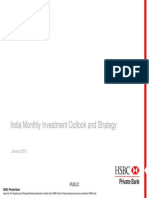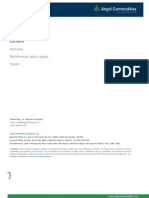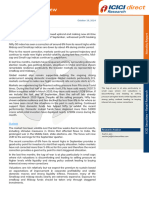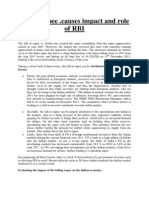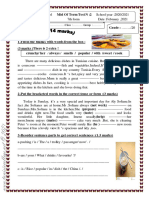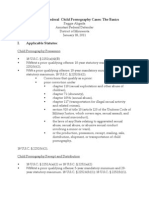21MAY
21MAY
Uploaded by
ritudahiya1389Copyright:
Available Formats
21MAY
21MAY
Uploaded by
ritudahiya1389Copyright
Available Formats
Share this document
Did you find this document useful?
Is this content inappropriate?
Copyright:
Available Formats
21MAY
21MAY
Uploaded by
ritudahiya1389Copyright:
Available Formats
From 21st may to 15th june Indian rupee broke below 55/dlr to record low setting up the prospect
of further falls unless the central bank takes measures or intervenes more aggressively, The rupee has now hit four consecutive record lows in as many sessions, at a time of intense turmoil over the euro zone, but there was no RBI intervention and no steps were taken to attract inflows via deposits and exporters' foreign currency holdings. Indian rupee is Asia's worst-performing currency this year and has proven particularly vulnerable to the global risk aversion given the steep fiscal and economic challenges facing the country. With just six months worth import cover, twin deficits, lack of confidence in the coalition government with regards to reforms, and also failure to attract foreign flows, suggests the INR is likely to hit 56-56.50 in the next two months. Also weighing on the rupee was dollar demand from oil firms and corporate. In the currency futures market, the most-traded nearmonth dollar-rupee contracts on the National Stock Exchange, the MCX-SX and the United Stock Exchange all ended around 55.09 on a total volume of $4.35 billion. The falls came even after the Reserve Bank of India announced the measures to target arbitrage and speculation in futures and options markets. Making dollars available for oil companies would remove a sizeable source of demand for the greenback from the market, and help support the rupee, which has hit record lows over the last seven consecutive sessions. RBI intervention and dollar selling by custodian banks as well as exporters converting their foreign currency holdings helped rupee gain. RBI remained positive for the market in the whole week. Indian rupee weakened as global risk aversion continued to darken the near-term prospects for the local unit. The RBI is believed to be looking to hold the rupee above the psychologically key level of 56 to the dollar, and has been seen intervening in the rupee forward markets, alongside its defence of the spot rupee. The central bank intervened briefly in spot markets and banks had been selling off their long dollar positions. Oil-related buying kicked in which weakened the rupee, as strong dollar demand from oil firms to meet month-end import commitments and a pullback in domestic shares from the day's highs weighed heavily. Concerns about India's fiscal and economic challenges are also impacting the rupee. The country allowed foreign retail investors to buy up to $1 billion in local corporate bonds in its latest move to bolster capital inflows and support the shaky rupee. RBI intervened in spot and forward markets to control the weakening of Indian Rupee. Indian Rupee clocking its worst month in half a year, as global risk aversion deepened and as a sharp slowdown in domestic economic growth added to gloom about its prospects. The perception of slowing policy reforms has further compounded the rupee's losses. The rupee's falls has set up expectations about more potential intervention from the Reserve Bank of India. The rupee continued to rise as a fall in global crude oil prices would allow oil companies to cut back on dollar purchases. Concerns on inflation, growth, twin deficits, all exist.
Oil importers stepped in to buy the U.S. unit, while waning greenback sales by corporates and exporters in late trade also hurt. The local currency was dented badly by a mix of global risk aversion and concerns about India's economic and fiscal challenges. Central bank could also cut interest rates. RBI intervention would be the most important factor in the near-term, however. After frequent interventions in both spot and forward markets. Central bank intervention helped offset the pressures from a weaker euro and from demand for the U.S. currency from oil firms. Global risk factors will remain key in the near-term, especially ahead of a meeting of G7 finance ministers that is expected to address the growing euro zone debt woes. The rupee has also been hit by waning confidence on India's economic outlook. A rate cut in China in late trade further boosted a revival in global risk sentiment which led to weakening of rupee. The Reserve Bank of India is also widely expected to cut domestic interest rates at its policy meeting on June 18 after growth slowed sharply in the first three months of the year, which may help improve confidence in the economy. The Indian rupee fell on tracking sharp declines in local shares, as the central bank was expected to cut rates less aggressively after inflation remained high, delivering potentially less of a kick to economic growth. Weakening domestic and global economic conditions have added to the likelihood it will take action to boost growth, despite lingering inflation worries. India reported headline inflation at 7.55 percent in May, in line with expectations, which however, under ordinary circumstances would keep the RBI focused squarely on controlling prices. However, Indian GDP growth slipped to a nine-year low of 5.3 percent in the March quarter, and industrial production was flat in May, data this week showed, adding to a sense of urgency about the deteriorating state of the Indian economy. Many market participants are betting on a modest reduction in both the repo rate and CRR because the combination of interest rate and liquidity easing would send a signal that the RBI is keen to prop up growth by providing liquidity to banks while ensuring inflation is under control. An easing in core inflation to around 4.85 percent in May give the central bank comfort to cut rates. Such an action would compel banks to cut lending rates as improved cash flow brings down their cost of deposits, which has remained high despite the RBI's previous rate and CRR cuts. The market also expects the RBI to sound pro-growth in its statement, and at the same time highlight inflation risks. Market reaction: Government bond yields and interest rate swaps could ease 5-7 basis points and the curves may shift downwards. The rupee <INR=D2> may rise marginally, with stocks posting modest gains.
The RBI may decide only to reduce rates but refrain from infusing more market liquidity, as it is already injecting cash into the system through bond purchases and may prefer to save the CRR tool for when liquidity tightens sharply. High food prices and consumer price inflation continue to pose risks to inflation and the RBI may not be comfortable turning dovish. However, only a repo rate cut may not be enough to spur banks to cut lending rates, or to improve sentiment sufficiently to bolster growth. To improve monetary policy transmission, the RBI could choose only to reduce the CRR, which would release liquidity and bring down banks' cost of funds immediately, enabling them to reduce lending rates. Many view a reduction in CRR as a more effective tool than a rate cut. The central bank has been under increasing pressure to cut the CRR after finance ministry officials and the country's largest state bank have called for one. The RBI may be reluctant to cut CRR by such a big margin, however, that could fuel inflationary pressures. Government bond and swap curves could steepen with short-end rates softening as cash pressures ease. Concerns that a steep CRR cut could prompt the RBI to avoid bond purchases could keep long-end rates elevated. investors hope the RBI turns actively dovish, betting that a big CRR cut accompanied by a rate cut ensures effective monetary policy transmission. With mounting pressure on the RBI from the government, some in the market believe the RBI may take the plunge and release an aggressively pro-growth policy. With a sagging economic growth, moderate core inflation, and increasing pressure from the government, it is unlikely that the RBI does nothing, as a downturn in domestic and global economic conditions has spurred calls for central bank action. Until a few weeks ago, the majority view was that the RBI would keep rates and CRR on hold at its June review.
You might also like
- OSCE Common Drugs To Explain (Oscestop) - UnlockedDocument2 pagesOSCE Common Drugs To Explain (Oscestop) - Unlockedhannahkim55No ratings yet
- NormalDistribution ActivityAnswerKeyDocument18 pagesNormalDistribution ActivityAnswerKeyRafael Assunção86% (7)
- BSBWHS521 CTI2XXXXX - Ass1 - Sub1-V4. CompletodocxDocument60 pagesBSBWHS521 CTI2XXXXX - Ass1 - Sub1-V4. CompletodocxJulijuliREYnu3nutsOOF Juanbox012100% (2)
- India Markets BriefDocument7 pagesIndia Markets BriefKalapala SandeepNo ratings yet
- Week Ended September 21, 2012: Icici Amc Idfc Amc Icici BankDocument4 pagesWeek Ended September 21, 2012: Icici Amc Idfc Amc Icici BankBonthala BadrNo ratings yet
- Market Outlook VRK100 14062011Document3 pagesMarket Outlook VRK100 14062011RamaKrishna Vadlamudi, CFANo ratings yet
- Evolving Bond MarketDocument9 pagesEvolving Bond MarketcoolNo ratings yet
- RBI Monetary Policy UpdateDocument12 pagesRBI Monetary Policy UpdateSai KarthickNo ratings yet
- Slide - 1: 2009. Between March 2010 and October 2011 The Reserve Bank Raised Its Policy RepoDocument3 pagesSlide - 1: 2009. Between March 2010 and October 2011 The Reserve Bank Raised Its Policy RepoGarrima ParakhNo ratings yet
- ICICIdirect MonthlyMFReportDocument12 pagesICICIdirect MonthlyMFReportSagar KulkarniNo ratings yet
- Monetary Policy ReviewDocument4 pagesMonetary Policy ReviewiesmcrcNo ratings yet
- India Market Outlook Aug 2013Document4 pagesIndia Market Outlook Aug 2013sindu_lawrenceNo ratings yet
- LinkDocument24 pagesLinkDhileepan KumarasamyNo ratings yet
- RBI Monetary Policy Review, 17th June 13Document5 pagesRBI Monetary Policy Review, 17th June 13Angel BrokingNo ratings yet
- Falling Indian RupeeDocument3 pagesFalling Indian RupeeAutonomo UsNo ratings yet
- Subbarao's Policy Dilemma: FM Promises Action On Capital Inflows When It Is NeededDocument9 pagesSubbarao's Policy Dilemma: FM Promises Action On Capital Inflows When It Is Neededabhinavm84No ratings yet
- RBG Financial News LetterDocument2 pagesRBG Financial News Lettermarketing2871No ratings yet
- Interest Rate: Wholesale Inflation Drops On Back of Softer Oil PricesDocument9 pagesInterest Rate: Wholesale Inflation Drops On Back of Softer Oil PricesRoshni BhatiaNo ratings yet
- The Reserve Bank of India's Big SurpriseDocument5 pagesThe Reserve Bank of India's Big SurprisedbrcsNo ratings yet
- Annual Report For Policy Holders Economic Update20170824 071040Document4 pagesAnnual Report For Policy Holders Economic Update20170824 071040Shree GuruNo ratings yet
- BlogDocument4 pagesBlogShabih FatimaNo ratings yet
- Speak of The Week Aug 10-2012Document3 pagesSpeak of The Week Aug 10-2012Bonthala BadrNo ratings yet
- Market ReviewDocument5 pagesMarket ReviewPriyanka BendelNo ratings yet
- Credit Policy 5 Reasons Why RBI Is Unlikely To ActDocument2 pagesCredit Policy 5 Reasons Why RBI Is Unlikely To ActShwetabh SrivastavaNo ratings yet
- RBI Monetary Policy - August 17Document3 pagesRBI Monetary Policy - August 17pappuNo ratings yet
- Devaluation of MoneyDocument5 pagesDevaluation of MoneyDynamic LevelsNo ratings yet
- Policy ET Report For 20241009Document13 pagesPolicy ET Report For 20241009Salman KhanNo ratings yet
- FixedIncome January 2012Document3 pagesFixedIncome January 2012jayaram_mca83No ratings yet
- Mumbai: The Indian Rupee Traded at A Lifetime Low of 58.67 To The Dollar OnDocument9 pagesMumbai: The Indian Rupee Traded at A Lifetime Low of 58.67 To The Dollar Onnishantjain95No ratings yet
- FICC Times!Document6 pagesFICC Times!r_squareNo ratings yet
- USD-INR PredictionDocument2 pagesUSD-INR PredictionpriitiikuumariiNo ratings yet
- American Stimulus PackageDocument2 pagesAmerican Stimulus PackagePriya SharmaNo ratings yet
- RBI InterventionDocument3 pagesRBI InterventionJaved ShaikhNo ratings yet
- India Struggles To Avoid Curse of StagflationDocument8 pagesIndia Struggles To Avoid Curse of StagflationSohil KisanNo ratings yet
- Business Line JulyDocument7 pagesBusiness Line JulyRaj KishoreNo ratings yet
- Rupee - Depreciation BriefDocument3 pagesRupee - Depreciation BriefSwapnil ShethNo ratings yet
- Sep 13Document3 pagesSep 13Naren KumarNo ratings yet
- Retail Research: Weekly Debt ReportDocument11 pagesRetail Research: Weekly Debt ReportGauriGanNo ratings yet
- Artcles On Rupee DevaluationDocument36 pagesArtcles On Rupee Devaluationolympia kurmiNo ratings yet
- Rupee Falls Again, Touches New LowsDocument1 pageRupee Falls Again, Touches New Lowsraman2572No ratings yet
- RBI BulletinDocument118 pagesRBI Bulletintheresa.painter100% (1)
- Awm House View - q3 Fy25Document35 pagesAwm House View - q3 Fy25saurav8912sharmaNo ratings yet
- TATA AIA Annual Report March 2020Document22 pagesTATA AIA Annual Report March 2020SantoshNo ratings yet
- Economics Club: Article Series - 2Document4 pagesEconomics Club: Article Series - 2Rahul SharmaNo ratings yet
- Market Outlook Market Outlook: Dealer's DiaryDocument15 pagesMarket Outlook Market Outlook: Dealer's DiaryAngel BrokingNo ratings yet
- Yield Curves Are Not Toeing RBI's LineDocument2 pagesYield Curves Are Not Toeing RBI's LineSandip RoyNo ratings yet
- Weak INRDocument3 pagesWeak INRJimlee DasNo ratings yet
- C O M P A N Y P R O F I L E: Achal Gupta Managing Director & Chief Executive OfficerDocument61 pagesC O M P A N Y P R O F I L E: Achal Gupta Managing Director & Chief Executive OfficervipinkathpalNo ratings yet
- Impt. For AsignmentDocument4 pagesImpt. For AsignmentPranshu_Priyad_8742No ratings yet
- Quantitative Easing Winding Up - How It Affects The Indian Markets - Yahoo India FinanceDocument3 pagesQuantitative Easing Winding Up - How It Affects The Indian Markets - Yahoo India FinanceRon ClarkeNo ratings yet
- Monetary PolDocument3 pagesMonetary Polst1dNo ratings yet
- Niveshak Niveshak: Financial Woes of India'S Rising SunDocument24 pagesNiveshak Niveshak: Financial Woes of India'S Rising SunNiveshak - The InvestorNo ratings yet
- India Monthly Investment Outlook and Strategy: January 2013Document13 pagesIndia Monthly Investment Outlook and Strategy: January 2013saikumarmohinderNo ratings yet
- Monetary Policy Note - October 2024Document3 pagesMonetary Policy Note - October 2024abhaykumarmittal001No ratings yet
- Ficc Times: The Week Gone by and The Week AheadDocument5 pagesFicc Times: The Week Gone by and The Week Aheadr_squareNo ratings yet
- RBI Monetary Policy UpdateDocument4 pagesRBI Monetary Policy UpdateAngel BrokingNo ratings yet
- The Ageing RupeeDocument2 pagesThe Ageing RupeeAniket PallavNo ratings yet
- ICICIdirect MonthlyMFReportDocument16 pagesICICIdirect MonthlyMFReportrchepalli112233No ratings yet
- Monetary Policy and Role of Banks: February 2015Document7 pagesMonetary Policy and Role of Banks: February 2015anik24No ratings yet
- Fall of Rupee .Causes Impact and Role of RBI: FactorsDocument2 pagesFall of Rupee .Causes Impact and Role of RBI: Factorsnikhu_shuklaNo ratings yet
- Ficc Times // /: The Week Gone by and The Week AheadDocument5 pagesFicc Times // /: The Week Gone by and The Week Aheadr_squareNo ratings yet
- Subbarao StunsDocument2 pagesSubbarao Stunssachdev_prateekNo ratings yet
- CC Unit 5 NotesDocument8 pagesCC Unit 5 Notesisthemail7No ratings yet
- Schlage S-6800 ManualDocument32 pagesSchlage S-6800 Manualgeotechsoil1100% (1)
- D 6766 - 02 - Rdy3njy - PDFDocument9 pagesD 6766 - 02 - Rdy3njy - PDFLucas FernandezNo ratings yet
- Devoir de Contrôle N°2 - Anglais - 7ème (2020-2021) Mme Sarah BaatourDocument4 pagesDevoir de Contrôle N°2 - Anglais - 7ème (2020-2021) Mme Sarah BaatourMarwa ChaiebNo ratings yet
- The Pearl & The Old Man and The Sea Book ReportDocument8 pagesThe Pearl & The Old Man and The Sea Book ReportYanti Nur100% (1)
- 半导体物理与器件第四版课后习题答案4Document18 pages半导体物理与器件第四版课后习题答案4David100% (1)
- Activity Coefficient of Binary System Using UNIQUAC Method - File Exchange - MATLAB CentralDocument8 pagesActivity Coefficient of Binary System Using UNIQUAC Method - File Exchange - MATLAB Centralbakhtyar21No ratings yet
- 2015 Kin JIACD - Sticky Bone - Sohn Et Al PDFDocument20 pages2015 Kin JIACD - Sticky Bone - Sohn Et Al PDFOscar CabreraNo ratings yet
- Client LogDocument24 pagesClient Logcoctibo2No ratings yet
- 08 Procedure For Design and Development Preview enDocument4 pages08 Procedure For Design and Development Preview enHadj Ali BoumedieneNo ratings yet
- Hospital Billing ScenariosDocument7 pagesHospital Billing Scenarioskrishna EnagaluruNo ratings yet
- EG4® 18kPV Version 1 External RSD Initiator Install InstructionsDocument9 pagesEG4® 18kPV Version 1 External RSD Initiator Install InstructionsAlan ZorkotNo ratings yet
- LIQUID PROPELLANTS FOR USE IN GUNS A REVIEW Nathan KleinDocument40 pagesLIQUID PROPELLANTS FOR USE IN GUNS A REVIEW Nathan KleinkopcicleNo ratings yet
- Direct Instruction Lesson Template 2017 1 - 2Document2 pagesDirect Instruction Lesson Template 2017 1 - 2api-455662270No ratings yet
- Keyboard TypingDocument32 pagesKeyboard Typingalboresmariel13No ratings yet
- IGC Document 147-13-E Revision of Doc 147-08-EDocument75 pagesIGC Document 147-13-E Revision of Doc 147-08-Elutfirashid87No ratings yet
- Good Governance Handbook - HQIPDocument17 pagesGood Governance Handbook - HQIPAnggika Yelzi PratiwiNo ratings yet
- Heartstopper SPANISH Transcript 201 OutDocument52 pagesHeartstopper SPANISH Transcript 201 Outfernanda benilda ramos riosNo ratings yet
- Photography Essay ExampleDocument4 pagesPhotography Essay Examplefllahvwhd100% (2)
- Defending Child Porn CasesDocument6 pagesDefending Child Porn CasesBrian MartinNo ratings yet
- Marketing Management Group 7Document75 pagesMarketing Management Group 72221001606No ratings yet
- Engineering Department: Mirza Ichsan NAU Firdaus MahgfiraDocument8 pagesEngineering Department: Mirza Ichsan NAU Firdaus MahgfiraMahgfira GintingNo ratings yet
- Comfaa CO: Demonstration and Hands-On Training Hands-On TrainingDocument31 pagesComfaa CO: Demonstration and Hands-On Training Hands-On TrainingAnousack KittilathNo ratings yet
- Lec 6 A Capacity PlanningDocument20 pagesLec 6 A Capacity PlanningPriyanka KelgandreNo ratings yet
- SJVN Ltd. Equity Research Report: Company InformationDocument19 pagesSJVN Ltd. Equity Research Report: Company InformationYashvi ShahNo ratings yet
- Investking - A Simulation Game On Investment BankingDocument2 pagesInvestking - A Simulation Game On Investment BankingBhavya BansalNo ratings yet





